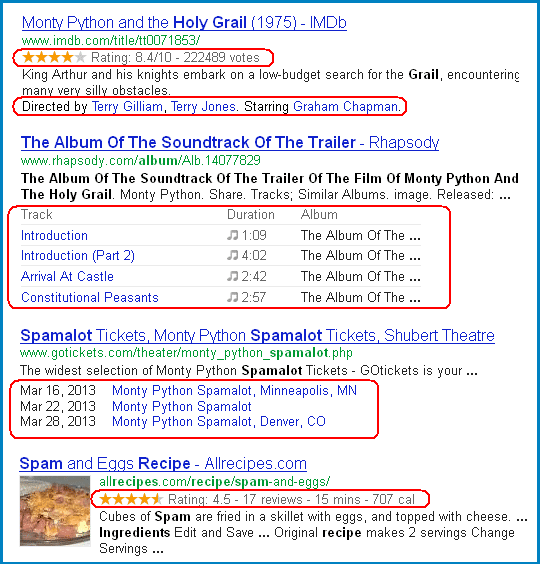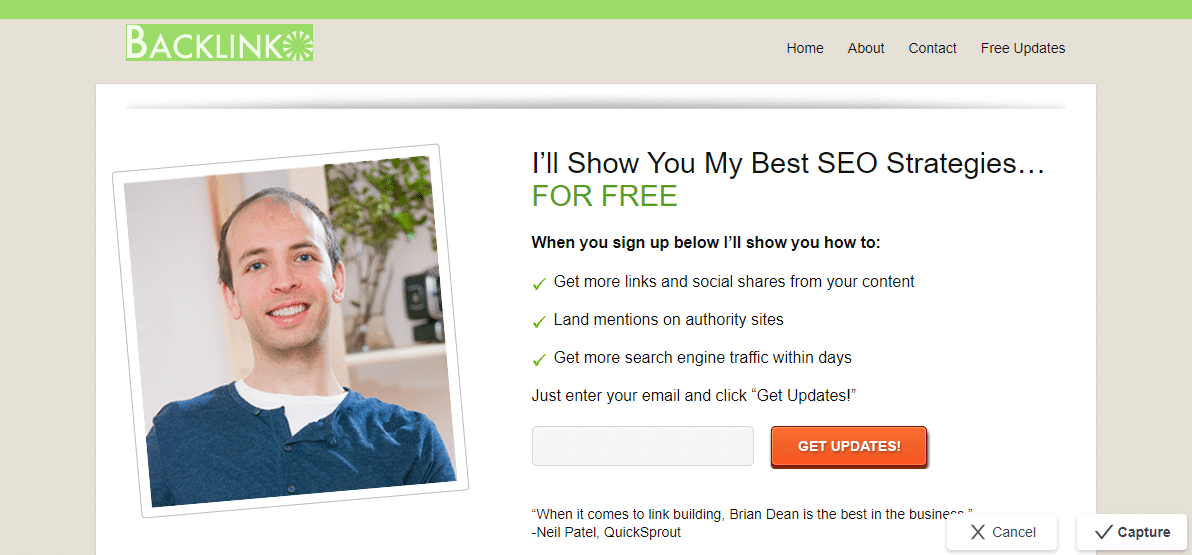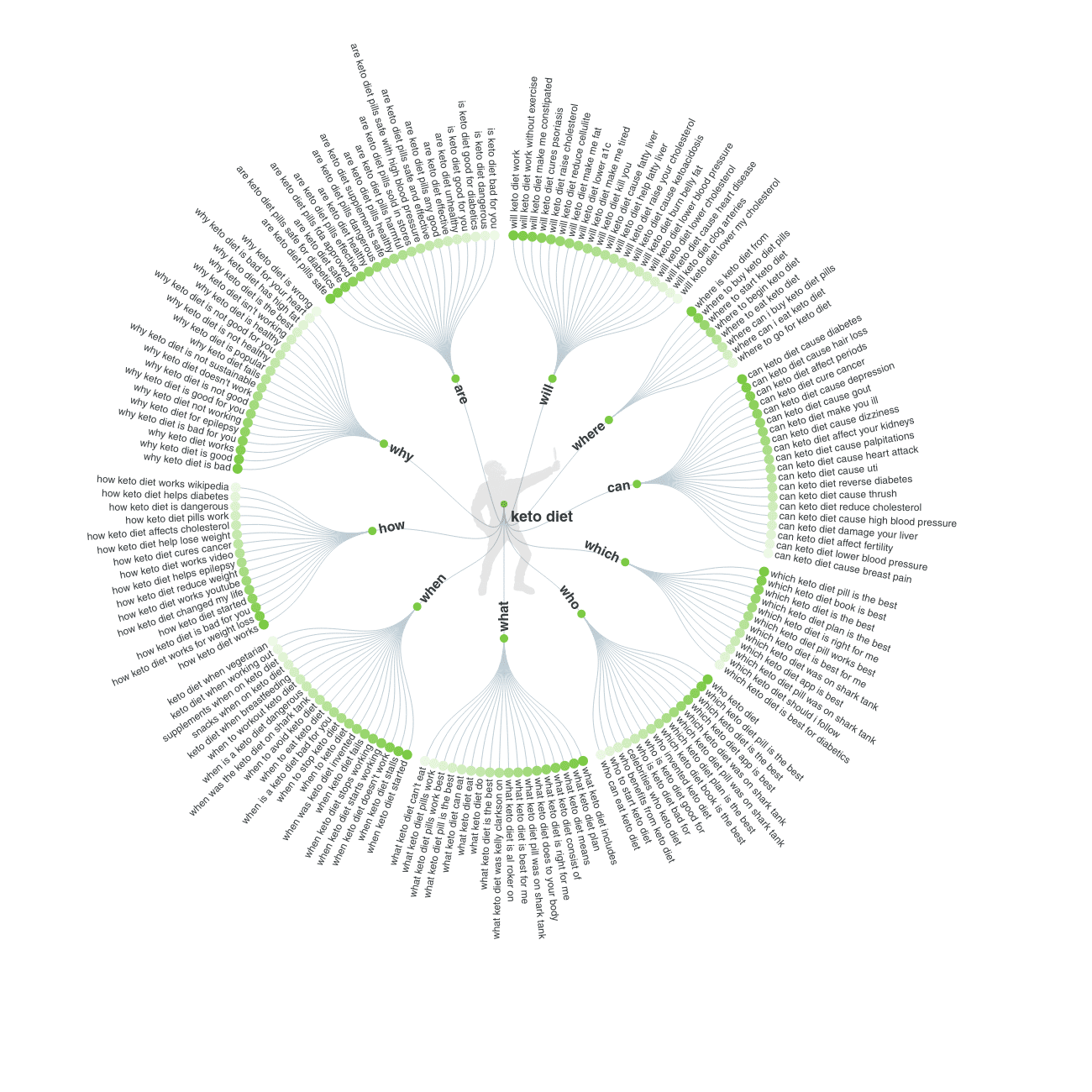Table of contents
- Not Optimizing Google My Business enough
- Ignoring Structured Data Markup and Search Features
- Not working on making the UX Stunning
- Ignoring branded keywords
- Focusing merely on bots and not users
- Ignoring Mobile users
- Unclear SEO Goals
- Not Leveraging the right SEO Tools
- Not performing the SEO Audits
- Not paying attention to site architecture
- Not updating the old content
- Not tapping the variation of long-tail keywords that you could potentially rank for
- Not satisfying search intent
- Not being creative with the Meta Title & Meta Description
- Not performing Content Audit
- Not being strategic with internal linking
- Not having a consistent NAP
- Not paying attention to goals and conversions
- Practicing old SEO, not adapting to the new SEO
- Not asking questions and seeking help from communities
- Not educating yourself
- Learning FALSE knowledge
It’s FREE!! I fail to understand why not make the most out of it. Google My Business Listing isn’t just a one time set up thing. It has to be optimized on a daily basis, there are myriad ways optimization takes place on Google My Business that optimizes your Business Listing which leads up to driving more and more traffic from the business listing.
Using Google My Business posts you can drive traffic to multiple webpages of your website and not just the homepage.
Once you super-optimize your Google My Business Listing, your website basically qualifies to rank for competitive keywords in local packs via business listing which can drive enormous organic traffic.
Here are some golden Google My Business Optimization Tips
- Fill out basic information (no-brainer)
- Geotag images and upload use [geoimgr.com]
- Leverage Google My Business Posts to 10X views on search
- Track website link with UTM tracking (super-useful for the client reporting)
- Embed Google My Business Map on the website and all the Web 2.0 sites
- Add Google Reviews Snippet on website homepage (If you are a WordPress user then a simple plugin does the trick)
- If the business hyper-local then don’t forget to add locational focus keywords in business listing name
- Use the same business name, address, and phone number on Google My Business at all the citation sites to get the citation for the listing (Yes, Google really cares about that)
- Indulge in Guest Blogging to promote anchor text for which you would want your website to be found, alternatively, your Google Business Listing also tends to rank
- Add keywords in image file names that you upload
Recommended: 6 Deadly Guest Blogging Mistakes You’ve Been Making
source: Search Engine Land
Let me ask you a question, do you notice pebbles on the streets? No? Seems likely. Would you notice them if they were decorated with colors and glitter? Yes!
Now you must be wondering the point of this out of the context question.
Well, I am just pointing out the basic human nature, we notice what appears eccentric. That’s what catches our attention. When a user performs a search query Google displays 10 search results that include/ might include featured snippet, rich results, Google My Business Listings, People also ask and ads of course.
Amidst all this glitter, it is possible that your ranked website may go unnoticed.
Leverage structured data markup to appear in rich results with star ratings. If you are a WordPress user then it’s sorted.
All you have got to do is add the Schema Pro plugin and follow the directives. If you have an HTML Static website then you just have to generate the essential schema code which isn’t rocket science. Just go to https://technicalseo.com/tools/schema-markup-generator/ choose the options depending upon the kind of schema you want and apply the same.
Once you add the schema, then update the page on Google using Google Search Console
Go to your Google Search Console Property → paste the link of the updated page on the upper search bar which is also called the inspect tool → Press enter and request indexing for the resulted page as your page has changed.
For website that are dealing with end consumer who aren’t grabbing the rich snippet opportunity; they are making a top SEO mistake that is very easy to fix.
Long gone are the days when Google used to rank a website with a terrible user experience that used the exude the vibes of the pre-dot-com burst websites.
UX is the key to perfecting SEO. Just look around everyone is perfecting the website UX. Backlinko didn’t use to look so stunning earlier, and now look; it’s like a benchmark of a stunning UX.
This is how Backlinko looked in 2014
This is how it looks now
Can you feel the difference? I can!
And that’s not just Backlink; pretty much every top blog in their respective niches now has spectacular UX than what it used to have.
Not working on making the UX stunning is a common SEO mistake as a lot of webmasters still haven’t realized what UX means for users now.
Update: Google Search Console has introduced “Core Web Vitals” that measures metrics like LCP (Largest Contentful Paint), FCP (First Contentful Paint), Interactivity, Cumulative Layout Shift these factors determine the kind of experience users have with a page. (source)
Google Loves Brands, you don’t have to take my word. Just perform a generic search query like shoes and see who comes on page 1.
One of the websites that will rank is Nike.
What can you do for branded keywords?
First and foremost it’s important that you choose a brand name that is unique; it shouldn’t be a spin off brand name that already exists otherwise you can never gain full traction to yourself a mistake that will make you suffer in the long run.
If your brand name is unique and people are searching for it then obviously you will remain the only results that will rank #1 and as a result you will get 100% CTR. Choosing an existing brand name is a SEO mistake to avoid moving ahead, the opportunity loss you bear is unnecessary.
This happens when your brand name gets some search volume. How do increase the search volume on your brand keyword?
The answer is branding and marketing. Leverage viral marketing strategies to make your brand well known across the web. Utilize the power of social media, influencer marketing & guest blogging to do just that.
Imagine if your target customers are going to 50 fashion blogs and seeing an article about your clothing store with it’s brand name, that would surely excite curiosity for them to look up your brand and that is how you increase the search volume; it happens passively.
Focusing merely on Search Engine Bots like Googlebot, Bingbot isn’t really a concrete strategy to begin with. Googlebot isn’t going to submit that form to become a lead or purchase a product from your e-commerce store.
If that’s not enough then get this, search engine bots are trying to imitate human behavior (source). Especially now with the inception of BERT Update, this holds truer than ever before.
It is human users that convince Google that hey their website is legit or hey their content is awesome let them rank higher.
The #1 thing Google wants to accomplish is providing an exceptional user experience so that users don’t have to go to other search engines like Bing, Yahoo, DuckDuckGo.
It is important that you focus on your blog’s readers instead of the Googlebot. Focusing SEO strategy on bots is the biggest SEO mistake one can ever make.
Mobile optimization is the real deal, period. Mobile SEO Mistakes are still observed which is unbelievable.
It’s okay if your website isn’t optimized for desktop users but it’s fatal if your website isn’t mobile-optimized. Nearly 80% of website visitors that you get are from mobile. Google Search Console even displays the message that they have switched to mobile-first indexing. (source)
Your mobile website visitors are coming from search engines, Google Discover, Content Aggregator apps like (InShorts), AMP, social media and more.
How do you nurture mobile users?
By making special changes in mobile UX that suits the needs of your mobile visitors. Changes like creating an AMP version of pages so that mobile visitors can access the pages from the search engines in less than a second.
Furthermore, you can add an option of night mode on your mobile version of pages catering exclusively to night owls who like to enhance their knowledge during night-time.
Every SEO project defines its own set of goals, one size doesn’t fit all is the thing to remember here.
You will come across tons of SEO Blogs that will only talk about how to get more traffic to your blog and how to rank your blog #1 on Google which is a pearl of very valuable wisdom to share, but that’s not all that there’s to SEO.
What about doing SEO for businesses. Some may be into the business of selling services, products while some may be into SaaS products.
It’s important to get clarity on goals. More traffic doesn’t equate to more sales and profit. E-Commerce websites, for example, dig into the Google Analytics → Product Performance report to see the number of organic sales generated for which products.
If yours is an e-commerce site but you’re hell-bent on just writing blogs and ranking them #1 on Google then that strategy might not pay off as well as you may think.
With an E-Commerce website, your goal always is to drive sales, getting people to product landing pages and get them to make a purchase decision.
With service-based websites the goal is different, it’s to generate qualified leads. Depending on the SEO Project the goals need to be ascertained.
Doing SEO without SEO Tools is one of the biggest mistakes one can ever make in SEO. SEO tools help you validate the success of strategy by metrics that are quantifiable in nature and help you make a ton of SEO improvements.
The basic SEO tools are a prerequisite for SEO projects of any scale no matter how small the project is. SEO Tools like Google Analytics & Google Search Console these two are more than enough for tiny SEO projects like service-based Local SEO projects.
If you are handling HUGE SEO Projects like National/International SEO, E-Commerce SEO, SEO for SaaS then the number of tools that you are gonna have to use obviously increases and for the better.
Handling huge SEO projects like that also makes it binding for you to use premium SEO tools like SEMrush, Ahrefs or Majestic SEO.
Full-fledged SEO tools like SEMrush are particularly useful as it can help a great deal in automating the workflow identifying intricate errors and flaws that can put your SEO projects in jeopardy.
Here’s the list of all the important SEO Tools you need to use
- Google Analytics
- Google Search Console/ Google Webmaster
- Google Tag Manager
- SEMrush/Ahrefs
- Ubersuggest
- Screaming Frog
- DeepCrawl
- Google PageSpeed Insights
- GTMetrix
- SEOptimer
SEO Audits aren’t something that needs to be performed only at the beginning of an SEO project or while pitching the client an SEO proposal.
SEO Analysis needs to be performed on an ongoing basis to measure the performance, set the benchmarks and calibrate the results.
The fluctuations in the SEO Project timeline are in a state of constant flux technical website issues that might come up after nowhere. Like did you know 404 pages might get created after nowhere that needs instant redirection because of a website with tons and tons of 404 represents poor health of your website SEO overall. Fix SEO errors with consistent SEO audits.
Site architecture that you need to think of strategically as it plays a crucial role in the long run. A website with an excellent website architecture enjoys perks like displaying site link extensions in SERP (Search Engine Result Pages)
Why that’s so cool? Probably because now you have a way to navigate users to different pages of your website from that SERP that has resulted in search results.
Ideal website architecture is the one where all the important pages of your website are within 3 clicks. Why is it so important?
Because spiders that come to crawl your website are in a rush they will NOT explore every inch of your website crawling webpages that are like 15 clicks away from the homepage.
The sooner your web pages are crawled the sooner they will be indexed and your web pages become eligible for securing a rank only once they are indexed.
Pro Tip: Have your website sitemap in the footer of your website
Pro Tip for bloggers: Have your high authority comprehensive guides in the footer section
Pro Tip for E-Commerce: Have your top-selling category & tag pages in the footer section
Not updating the old content is a sure-fire way to jeopardize your website rankings, the website traffic, and the authoritativeness of your content.
It would help if you carry out content audit once in every 3 months to identify the content gaps. Identifying and bridging the content gaps will help you not fall prey to competitors bridging it themselves in a means to steal your glory from Google SERP.
Like, let suppose your niche is SEO you have an SEO blog. The moment Google introduces a broad core algorithm update; that calls for updating nearly every piece of content you have on your blog. Be it link building, Off-Page SEO, On-Page SEO, and whatnot.
Focusing merely on a single long tail keyword sounds very traditional not to say that it couldn’t work. It will work but only to an extent.
Your competitors are using variations of long tail keywords to rank their content easily, quickly and for all the variations except for just the main long tail keyword.
Would you not like to stand a chance to rank your page for not one but 4-5 more related keywords?
Even a basic keyword research tool like Google Keyword Planner can help you identify the long-tail keyword modifications.
To dig deeper leverage tools like SEMrush, AnswerThePublic, Ahrefs or KWFinder.
Search Intent is sadly one of the most neglected aspects of search engine optimization. It is important to define the searcher’s intent, it matters as it determines the conversion rate.
Essentially there are 2 types of search intent
1. Informational Intent –
Informational intent means that the searcher is in the research process he wants to research the product/service before purchasing it. To serve searchers of that intent you need to provide information in a way that would satisfy the intent of gathering information.
2. Navigational Intent –
Searchers with navigational intent are trying to get to a specific website which they Google and reach. Navigational Intent will work for your website once you establish a brand, Once a brand is established it is then that your branded keyword will have some search volume.
“Nike” branded keyword, for example, has a 40,90,000 search volume.
Meta Tags i.e Meta Title Tag & Meta Description Tag don’t just serve the SEO angle. The main purpose of that is serving the users. Highly SEO Optimized title tag & meta description tag might get you on top but what’s the point if people aren’t clicking through?
CTRs are anyways coming down due to cannibalization by Google. It is important to get creative with Titles and description. Create titles and descriptions of the sort that compels people to clicks through when they see your web page in the search results. Get the added advantage by serving both the algorithm & the users.
Make use of tools like Coschedule’s Headline Analyzer to write a title tag that has emotion acting as an anchor compelling people to click. Make use of Grammarly to write grammatical-error-free descriptions with bait to describe your page.
Content Audit is an important activity that should be performed by any website that is putting out content, it could be bloggers and business websites that are putting out blogs.
Here’s the deal, we write articles and publish it so that it can rank on page of search engines and drive significant traffic out of it, that doesn’t change ever?
But what if 30% of the articles on your website are ranking on page 4 or farther? Those articles simply cannot bring traffic from search engines if they are that far. Only if users are desperate only then they go to page 2 of Google.
It is important to perform a content audit of articles not ranking well in the hopes of revamping the content, adding on page elements, and building backlinks if the need be. Despite doing all of these if the content remains redundant then it’s worth taking the high road, just delete those articles they are doing you no good.
You will be surprised to find out the surge in your organic traffic as you do it because Google now sees your blog as a high quality blog and it will give you the equity because of that.
Internal Linking offers a huge opportunity for search engine optimization that is highly ignored and that is sad!
Here is the deal, it is easier to build links on anchor text of your choice on your own website than on another website, in fact, you can do it right away.
Internal Linking is important for a couple of reasons.
#1. For users to navigate across pages, each suggestive anchor text link can guide to another page.
#2. You can direct authority flow from authority pages to the pages you are trying to rank. For example, you can use your most authority blog post (that is driving like 70% of traffic to your website) to spread authority to other related articles by inter-linking.
#3. You can diversify anchor text by getting an internal link for interconnected anchor text for the page. For example, let’s say you have an article title “Digital Marketing Strategies” not only should you add link for that page over “Digital Marketing Strategies” anchor text but diversify anchor text by taking links on “internet marketing strategies”, “web marketing strategies”, “marketing strategies” and so many more head keywords that are in that page.
Speaking of Local SEO the key is to get the NAP (Name, Address & Phone Number) correct. This is a mistake that a lot of people make and thus sabotage their Local SEO campaigns.
Google is an algorithm not a human that it would understand human glitch and be considerate. Seeing inconsistent NAP Google can easily infer your inconsistent listing to be different businesses al together and as a result you will not get the citation flow that you were supposed.
Result? Your website suffers and so does your Google My Business Listing. You wouldn’t want that.
Citation Management is a critical job and must be handled with utmost care. If you are delegating this job to a freelancer then make sure that you give him the correct Name, Address, Phone Number, Business Description, Business Category. Make sure that he is being consistent with the data you have supplied.
Leverage Listing Management tools like Yext to see inaccuracies in the listing and have them fixed. As you fix it, it takes a few months for results to appear.
There are agencies who has this specific service of listing management.
Recommended: Get Found On Search Engines With These Free Business Listing Sites
This happens when SEO Projects are conducted with very vague objectives. Objectives like just getting enough traffic.
Traffic isn’t the sole motto why SEO is conducted, especially if with business websites. It is conducted for goals and conversions.
What are goals and conversions?
It differs from project to project, every SEO project has a different objective to achieve.
Types of SEO Projects
– A News Portal/ Blog (Objective – HIgh Traffic for maximizing ad revenue and Affiliate conversions for again maximizing revenue)
– An E-Commerce website (Objective – Sales)
– A Service Website (Lead Generation via forms/chatbots)
– A Personal Branding website project (awareness, visibility, share of voice and engagement)
The point is, traffic & ranking keywords is not always the objective its just a means to an end. The end is driving conversions. For an E-Commerce project the traffic and ranking keywords should lead up to actual organic sales.
How do you calibrate goals & conversions?
Google Analytics. It’s a Free SEO Tool by Google. Using GA you can set goals & events to measure the conversion rate.
The old SEO is dead, bury it. Things in SEO don’t work the way they did back in 2012/2013
Google has updated its algorithm dramatically. It’s almost mirroring human behavior now. The cheap old parlour tricks that used to sway Google won’t work any longer.
Did you know? There was a time when Google couldn’t differentiate between high-quality and poor quality backlinks, as a result people were building links via blog commenting and seeing astounding results? Yes, we have been there.
Fast forward to 2020 things have changed, the new age of SEO practices needs to be adopted and practiced.
What works now in the SEO?
- High-Quality Link Building (use techniques like Guest Blogging focus more on branded anchor text)
- Work on making website UX stunning and stand apart
- Technical SEO
- On Page SEO
- E-A-T (establish authority, expertise and authoritativeness)
- Influencer Marketing
Ever heard the phrase “Two heads are better than one” well it’s true what they say and what if I told you can get 100’s or 1000’s of heads when it comes to seeking expert opinion.
Join SEO Facebook Groups like
These Facebook Groups are the best when it comes to asking a query and getting expert’s feedbacks. These groups consist of real SEO practitioners who have handled tons of SEO projects and driven great results and they are more than happy to help you when you are stuck.
The best part “It’s FREE”
These Facebook Groups work on the modus operandi of sharing and caring. Help those in need when you can help and seek help from the community when you need it. The SEO communities really respect each other and help those in need.
SEO is not static. It’s ever-changing. To keep up, you need to educate yourself on the daily basis. Nobody considers themselves an expert in this field because it evolves everyday. Even the likes of Neil Patel claims that he looks up to Brian Dean & Search Engine Roundtable to educate himself and keep up.
Where does that leave us? It’s super-important to keep up with the algorithm changes. It’s not difficult though. All you need to do is consume knowledge from trusted sources.
I for one prefer to get my dosage of SEO knowledge from blogs like
This is arguably the biggest SEO mistake people can unknowingly make. Consuming on False knowledge. Rely for knowledge of blogs and YouTube channels that has exhibited a track record of knowledge that has actually helped people.
Go with trusted sources that everyone talks about. Sources like Search Engine Journal, Backlinko, Neil Patel, Income School. Once you gain a deeper understanding of SEO through practicality then you can sense if the said SEO blog is preaching false knowledge.
For newbies, it’s best to stick with the sources that everyone talks about.
So there it is, 22 mistakes in SEO you’re probably making; maybe more. Let us know in the comment section what other mistakes you think people in SEO are making.
What are entities anyway?
According to a 2016 patent by Google, “an entity is a thing or a concept that is singular, unique, well-defined, and distinguishable”. Google continues by stating that an entity can be a person, place, item, idea, abstract concept, or concrete element.
I am sure that in the recent years you have been hearing a lot about entities if you are consuming content from good SEO blogs like Search Engine Journal and the likes.
The excessive focus on keywords deviates an SEOs attention from entities which is the very thing Google is looking for in a web page so as to determine for if this should rank for a given search term.
Keyword-heavy approach focuses on repeating the keyword and its variation ample number of times whereas Entity SEO approach dictates that Google wants to see x number of entities on a webpage that complements the topic overall in semantic SEO sense.
They even have a tool for this using which you can see entities they are detecting on a webpage.
Here is the screenshot take a look.
In this screenshot we can see that as we scan the text content on Google NLP Demo Tool it detect all these entities and even groups them with distinctive labels like Organization, Location, Person etc.
That’s what Entity SEO is for you.
Search Engine Land in this article explains how Google’s BERT Algorithm is leveraging entities, you must give it a read once if you want to dig deeper.
If you found value in this then don’t forget to share.
Further reading

Kunjal Chawhan founder of Decode Digital Market, a Digital Marketer by profession, and a Digital Marketing Niche Blogger by passion, here to share my knowledge








Making mistakes is fine as long as you learn from them quickly and avoid them later on.
That’s correct! Thanks for dropping by
Hey Kunjal Chawhan ,
Excellent post and fantastic work. I truly appreciate your hard-works.
Every time yo comes up with an ideas that are truly helpful in every aspect. The list of seo mistakes that you have suggested are the major mistakes that many people does. Avoiding and focusing on these mistakes will be a great helping hand. You have elaborated the points very nicely and provided all the crucial information that is true enough to educate the readers.
Making mistakes teaches us several things and makes us more better.
Eventually thanks for sharing your knowledge and such a helpful post.
Thanks Adarsh, I am happy to see that my content consistently helps you and adds value 🙂
Hey Kunjal… The post really very informative & best part is the content is very simple ( easy to understand ).
I was a victim for “4” that is i use to ignore ” Brand Keyword ” back then.
Under “13 – Search Intent ” How about adding one more search intent called “Transactional Search Query Type ” ?
Keep posting more & more information posts…
Thank you for 22 Deadly SEO Mistakes To Avoid in 2022